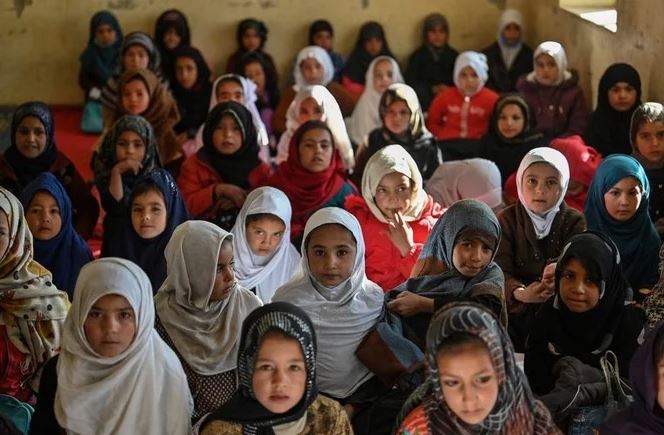BOGOTA: Conflict, forced displacement, climate-induced disasters, and the compounding effect of the coronavirus pandemic have left hundreds of millions of children and adolescents — particularly girls — without access to quality education worldwide.
Today, 222 million young people living in regions affected by wars and disasters — in Africa, Asia, the Middle East, and South America — are without access to uninterrupted or quality education.
According to analysis from Education Cannot Wait, the UN global fund for education in emergencies and protracted crises, 78.2 million of these crisis-impacted children are out of school and 119.6 million are not achieving minimum-competency levels in reading and mathematics despite attending school.
Nowhere, perhaps, is the education emergency more obvious than in Afghanistan, where the Taliban’s return to power in August 2021, combined with drought, the regime’s global isolation, and the country’s near-bankruptcy, has deprived millions of children of the right to decent schooling.
Following the US-led coalition’s chaotic withdrawal from Afghanistan in August last year, the resurgent Taliban insisted they had changed their ways and would allow women and girls to continue studying, thereby breaking with the strict policy of gender segregation the group had implemented while in power from 1996 to 2001.
However, on the morning of March 23 this year, when more than 1 million girls showed up at schools throughout Afghanistan, expecting to resume classes for the first time since the Taliban seized power, they were turned away from the gates.
Speaking at the launch of the fund’s 2021 annual report in New York City, ECW Director Yasmine Sherif told Arab News: “When we went to Kabul and spoke with the minister of education, there was a clear agreement that children and youth and young girls up to the age of 18 deserve to go to school. So, their starting point was, ‘yes, we need to develop a plan and a system.’
“It looked as if we were moving toward that. And then suddenly there was a decision in March to ban (secondary school girls from returning to the classroom), which took us all by surprise.”
Since its launch in 2017, the ECW has worked with governments, donors, UN agencies, civil society groups, the private sector, and communities to provide almost 7 million young people with quality education in some of the world’s most challenging humanitarian crises, with girls representing around half of its beneficiaries.
In 2021 alone, the agency reached 3.7 million children and adolescents, and an additional 11.8 million with its COVID-19 interventions. Its investments have been made possible through $1.1 billion in contributions to the ECW trust fund.
In August, the ECW published its annual results report for 2021 and its new strategic plan for 2023 to 2026 ahead of its high-level financing conference, due to take place in Geneva in February.
The fund views education as a life-saving and sustainable response to humanitarian crises, from the war in Yemen to the stabilization phase in Colombia. However, it is in countries such as Afghanistan, where years of progress in girls’ education are being actively rolled back, that action is needed most.
The Taliban’s about-face on secondary education for girls, which reportedly happened after a secret meeting of the group’s leadership in Kandahar, suggests that the ultraconservative wing still retains control over the regime’s ideological trajectory.
Primary school-aged girls in Afghanistan are permitted to receive schooling up until the sixth grade. Women are also allowed to attend university, albeit under rigorous gender segregation rules and only if they abide by a strictly enforced dress code.
The Taliban leadership has sought to justify its ban on secondary education for Afghan girls on the grounds of religious principle — a view that many Islamic scholars and civil society groups dispute.
Sherif said: “From what I have seen, speaking to them informally, there are those who want to resume education for secondary girls and there are those who do not.
“You have those who are educated, who are aware, who feel that sense of humanity that sort of binds every religion, doesn’t matter what religion. Humanity comes with any religion, whether it’s Islam or any other world religion. They understand from their heart that, ‘of course my daughter should go to school.’
“And then there are those who may not even understand their own religion.”
On the situation in the context of Afghanistan, Sherif added: “It depends on who interprets. It’s an interpretation issue. Sometimes it has to do with lack of education. It has to do with a lack of tolerance. It may have to do with many different reasons. There’s an internal struggle there. That’s not politics, that’s human behavior. That’s an internal struggle.

